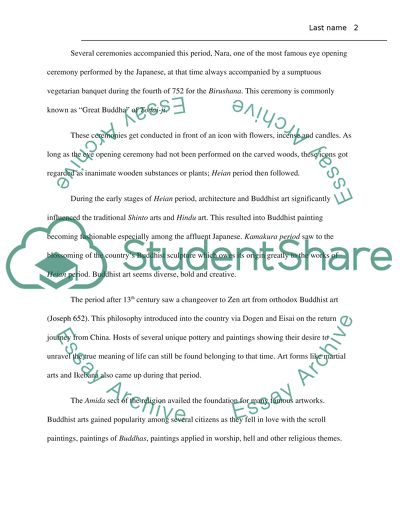The Art of Jepanese Buddhist Essay Example | Topics and Well Written Essays - 1000 words. Retrieved from https://studentshare.org/history/1461012-the-art-of-jepanese-buddhist
The Art of Jepanese Buddhist Essay Example | Topics and Well Written Essays - 1000 Words. https://studentshare.org/history/1461012-the-art-of-jepanese-buddhist.


